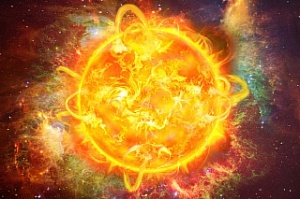Young scientists of the Department of Space Physics and Ecology of the Faculty of Radiophysics have investigated the effects on the human brain of geomagnetic storms caused by solar flares. During the year, student Julia Afanasyeva “caught” magnetic storms and conducted rapid testing of people’s psychophysical condition. It was found that the magnetic field perturbations of the four points can inhibit the speed of human reaction.
- The processes occurring in the Earth's biosphere are closely related to physical factors, - says Julia Afanasyeva. - All of them, as a rule, depend on the level of solar activity or have a cosmic nature. Electromagnetic, gravitational, and acoustic fields, as well as geomagnetic and interplanetary magnetic fields, are major factors of influence on the human biological system, but their effect is insufficiently studied.
Therefore, it was decided to investigate the characteristics of sensorimotor human reactions at different levels of geomagnetic activity - from windless conditions to extreme storms. During the experiments, participants carried out tests of auditory-motor and visual-motor reactions. The information system LUM (Local Universal Monitoring) was used for evaluating the results. It was proposed by colleagues from the V.I. Vernadsky Crimean Federal University and the Space Research Institute of Russian Academy of Sciences.
The results showed that in the case of magnetic field of the Earth’s perturbation from four points and above, the time of sensorimotor reaction are increased significantly. This effect may partly explain the statistics of Ministry of Emergency Situations for a marked increase in the number of accidents, industrial injuries, and industrial accidents involving the human factor during periods of geomagnetic disturbance.
- We observed a similar picture studying the influence of natural anomalies of the geomagnetic field on the electrical activity of the human brain - says Maxim Sokolov, a graduate student of the Faculty of Radiophysics. - On two expeditions to the Altai we carried out a series of experiments at a site with inhomogeneity of the magnetic field (about tens of thousands of nT per meter). It was there, near the district centre Kosh-Agach, where the epicenter was of the most powerful earthquake in the past decade.
EEG measurement parameters in the daily monitoring regime were made by the volunteers, equipped with portable electroencephalography. During the experiments, people were placed at the base camp with natural surroundings in the anomalous zone. The effect of the anomalous magnetic field led to the activation of certain parts of the brain and an increase the amplitude of EEG characteristics of 2.5-4.5 times compared to background level. When using the LUM system, testing results were similar to the values recorded under the influence of magnetic storms.

